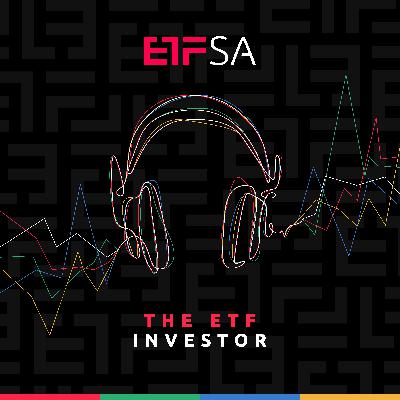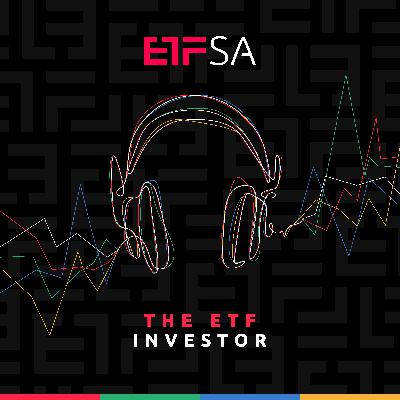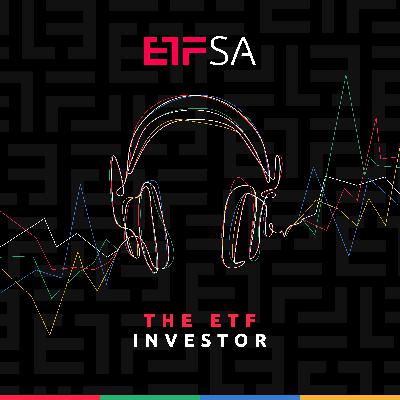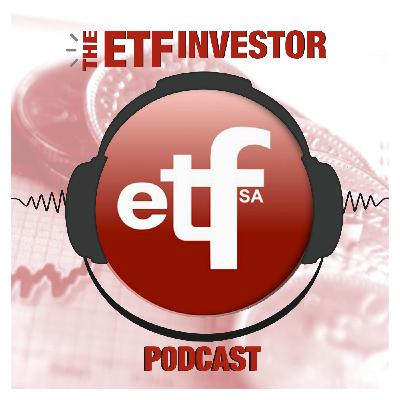Discover The ETF Investor
The ETF Investor

The ETF Investor
Author: Nerina Visser, CFA
Subscribed: 51Played: 563Subscribe
Share
© Copyright protection
Description
The ETF Investor – brought to you by the ETF Specialists, ETFSA. Through this podcast series we bring you insight and understanding of ETFs (Exchange Traded Funds), clarity on how to best use it in any type of investment portfolio, technical details of what happens inside the ETF, and practical advice on how to choose ETFs for your investment wants and needs.
68 Episodes
Reverse
In an investment world dominated by a select number of exceptional companies, the quest for opportunities beyond the Mag-7 requires looking the other way. Closer inspection of the UBS range of index-tracking ETNs reveal some interesting and unique index exposures worth exploring if you are looking for diversification in the highly concentrated AI & Tech mega theme.
In celebration of Women's Month in South Africa, we explore the importance – especially for women – of having an independent financial plan that addresses both the near-term needs of living expenses and unexpected emergencies, and the longer term focus of building sustainable retirement savings and long-term generational wealth. And in all cases – there's an ETF for that!
The 2nd quarter distribution season for ETFs on the JSE has just concluded, with the final payments received by investors in the first week of August. The quarterly ETFSA distribution report consolidates all the relevant information and serves as a reference guide for investors who focus on the yield component of the total return in investments, but also for those who rely on receiving regular income from their investments.
You can trade your view on the gold price with physically-backed gold ETFs, but what about gold miners, gold mining companies? What are the options available to ETF investors? The Satrix RESI ETF, tracking the FTSE/JSE Capped RESI10 Index offers an intriguing opportunity.
After a strong performance in 2024, the demand for gold has accelerated year-to-date, breaking records along the way, and flirting with the $3,000/oz level. What is driving this demand? As an investor in a gold ETF, where is my gold held? And how is its value determined?
2024 has been a stellar year for the ETP industry in South Africa. What stood out for us at ETFSA? Leading into another year of Trump, will it be a bump, or a dump? As ETF investors, we take insights from the past as we strive to thrive in 2025.
EasyETFs, new kid on the block as an ETF issuer, have joined the growing list of actively-managed ETFs on the JSE, but does this make things more complex, or "Easy" for investors? We also revisit its roots in Cloud Atlas and the closure of that chapter.
When one of the largest active fund managers in South Africa join the ETF industry, people take notice, and others ask questions. What's behind the Coronation strategy, and what's inside their range of AMETFs?
Traditional index-tracking ETFs require an index to track. So what if there is no index, like in the case of balanced funds, or multi-asset portfolios? The construct of an actively-managed ETF provides an ideal solution for simple, straightforward, strategic, static asset allocation strategies in a cost-effective, rules-based, transparent investment option, suitable for all investor types.
With the top of the global interest rate cycle in focus, we turn our attention to the outlook for listed property companies and REITs, and the range of exchange-traded product options available on the JSE. There is more to consider than just the interest rate cycle, and we investigate how active management can be applied in global property ETF investments.
Just when you thought factor-based investments have passed their sell-by date, a new South African ETF issuer has burst onto the scene with a multi-factor, style-based, risk-managed, actively-managed domestic equity ETF.
For many investors the term ETF is synonymous with index-tracking, or so-called "passive" investments, and the concept of an actively-managed ETF therefore represents a contradiction in terms. But the term "active management" does not necessarily mean lots of activity or significant tracking differences to the reference index, and it offers opportunities to manage index-referenced investments more efficiently.
FNB recently listed three new offshore ETFs, but the underlyings are very familiar to us – MSCI World, MSCI Emerging Markets and S&P 500. How do you choose between multiple ETF options when they offer the same – or very similar – underlying investment exposure?
Financial advisors play an important and valuable role in the wealth creation and preservation journey. But can you DIY at least some of it, and if so, where and how? The ETFSA Investor Hub is the perfect combination of digital-when-you-want-it, and human-when-you-need-it.
Factor- and style-based investment strategies continue to evolve and attract the attention of portfolio managers and analysts alike. But when an ETF Manco proposes the amalgamation of two of their factor-based ETFs into a vanilla, size-based ETF, the inevitable question arises about the future of factor investing.
There is so much more to investment on the stock exchange than buying shares in local companies, and the strong growth in bond ETFs are testimony to the attraction of a whole new world for investors. Whether you think "bonds are boring", or "the bond market is the smartest in the world", this discussion on actively-managed bond ETFs is bound to expand your horizons.
As central banks continue with the interest rate mantra of "higher-for-longer", the uncertainty of the timing and speed of expected rate cuts present specific challenges for investors looking for stable and inflation-beating income. An active strategy through this period of volatility and uncertainty can offer specific benefits, but do you understand the additional risks this may bring?
There has been a sudden surge in interest in precious metal ETFs in recent months, especially in platinum. What is driving this demand? Why can only some banks, and no asset managers, be issuers of commodity ETPs? In addition to platinum, we cover gold, silver, palladium and rhodium in this podcast.
The options for income and yield in an investment portfolio continues to expand, and in this episode we feature two new ETFs available to investors for consideration. The JSE is also getting its first actively-managed ETF, decisively crossing the divide between index tracking and active management in exchange-traded products. There is no such thing as "passive" in investments.
The appeal of dividends in an investment strategy is well-known, and arguably timeless, but supplementing this strategy with share buybacks is perhaps less well-known, and certainly not one that has been easily accessible for retail investors. The range of investment strategies available through the Actively-Managed Certificate (AMC) wrapper, listed on the JSE, continues to expand, and now also allows for easy access to an enhanced yield strategy, combining dividends and share buybacks in one portfolio.










